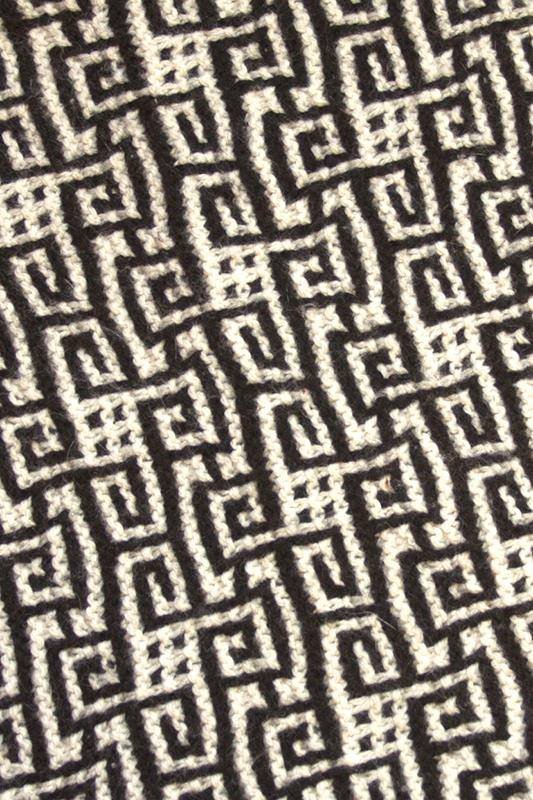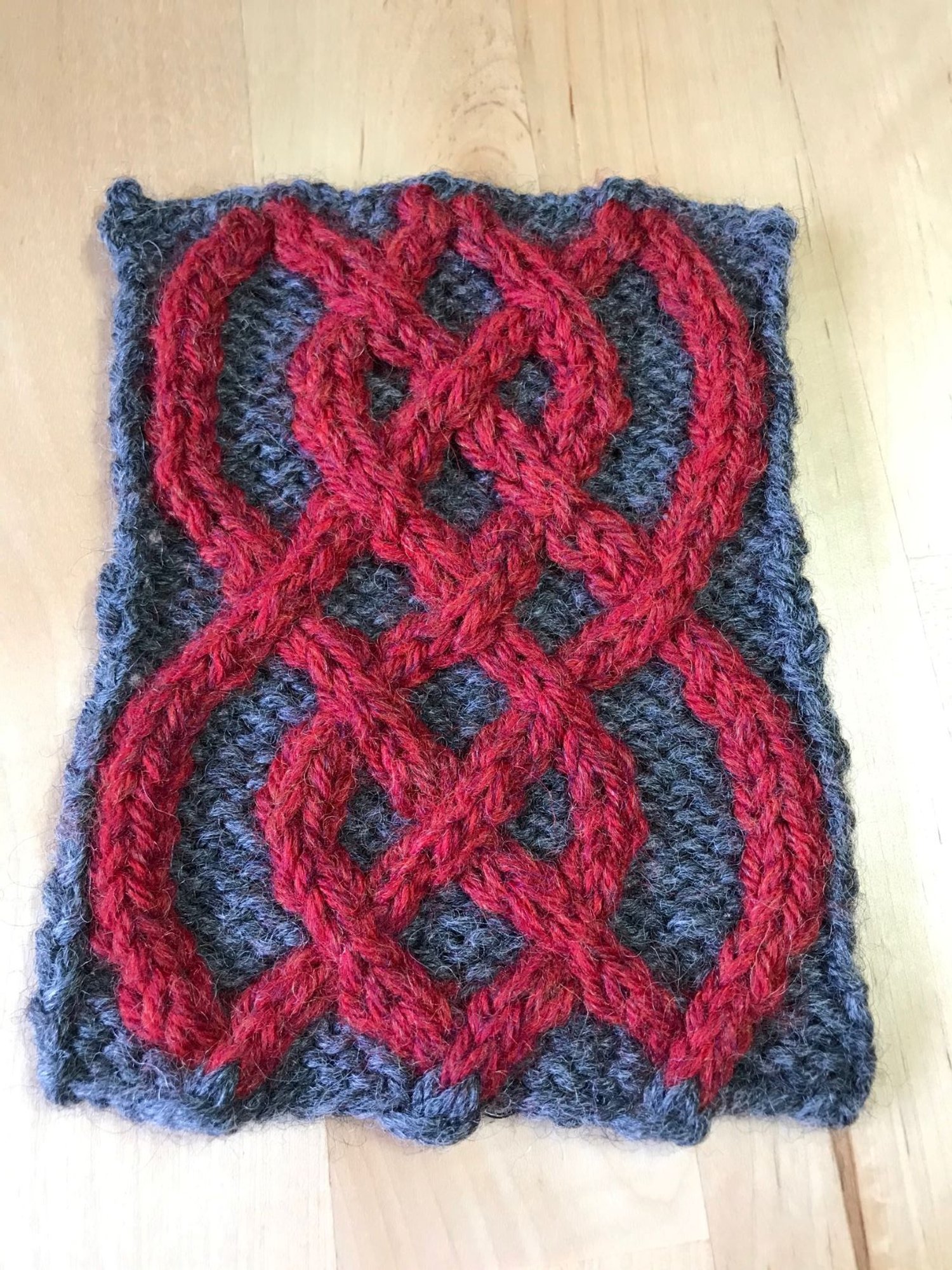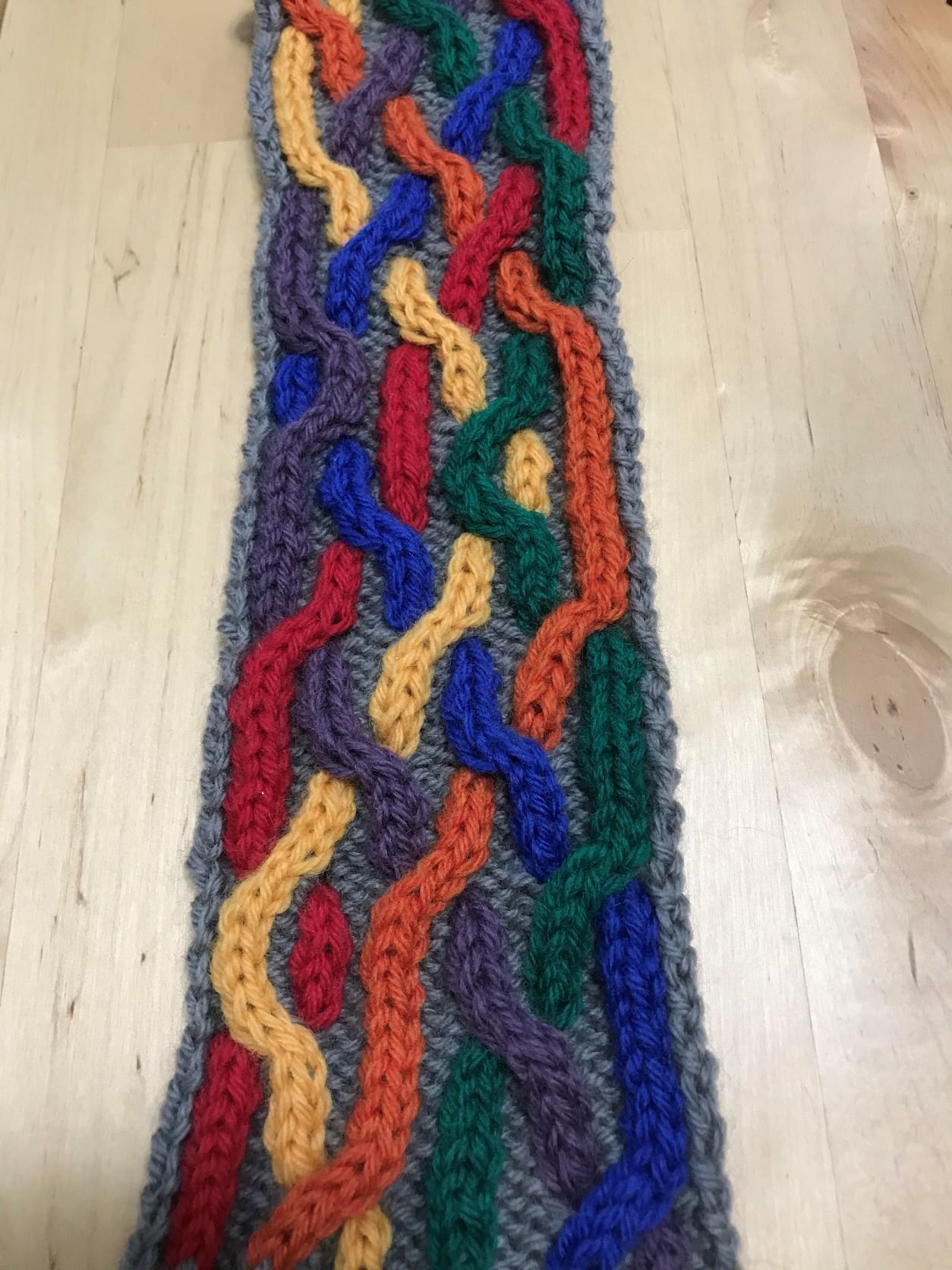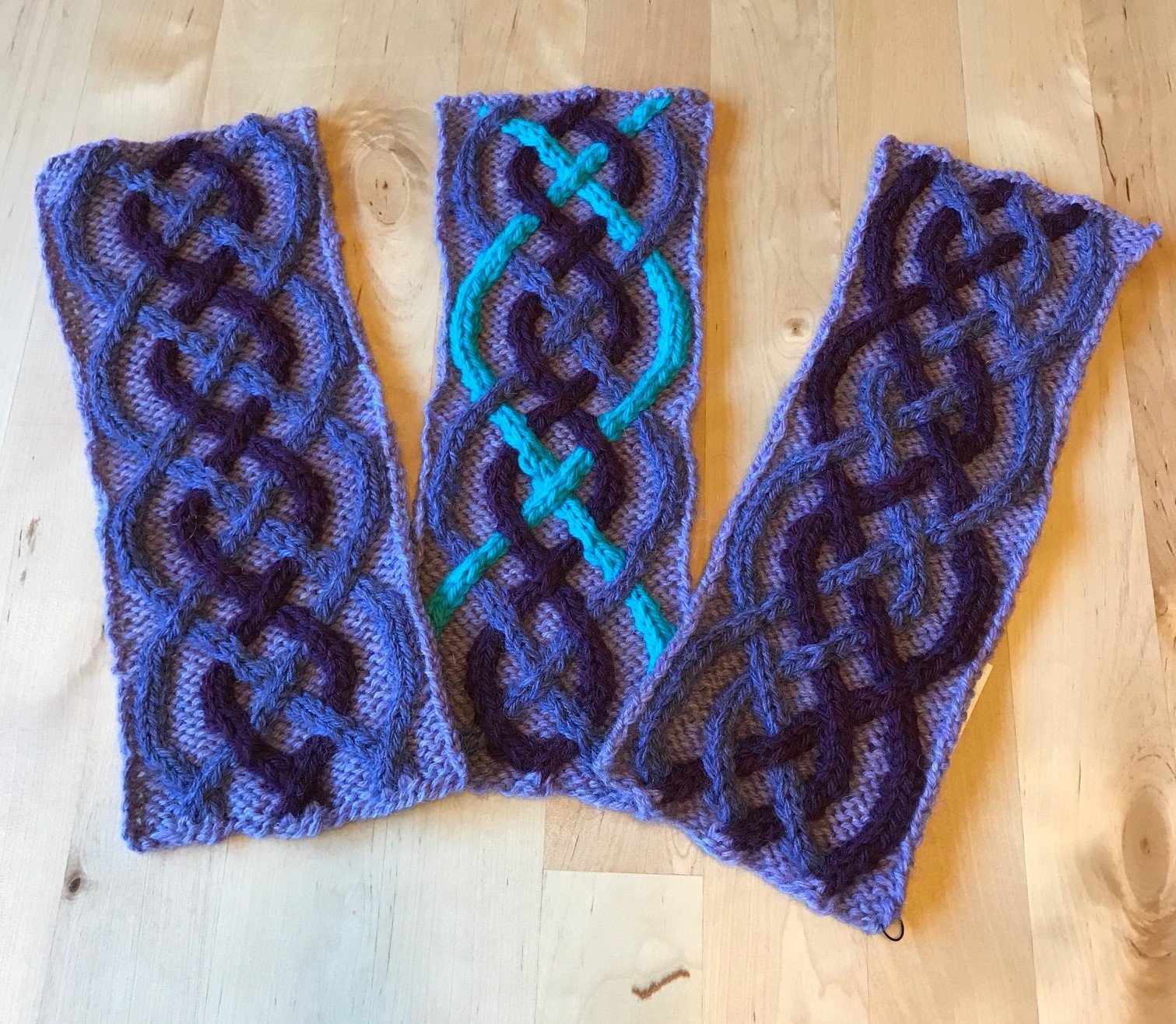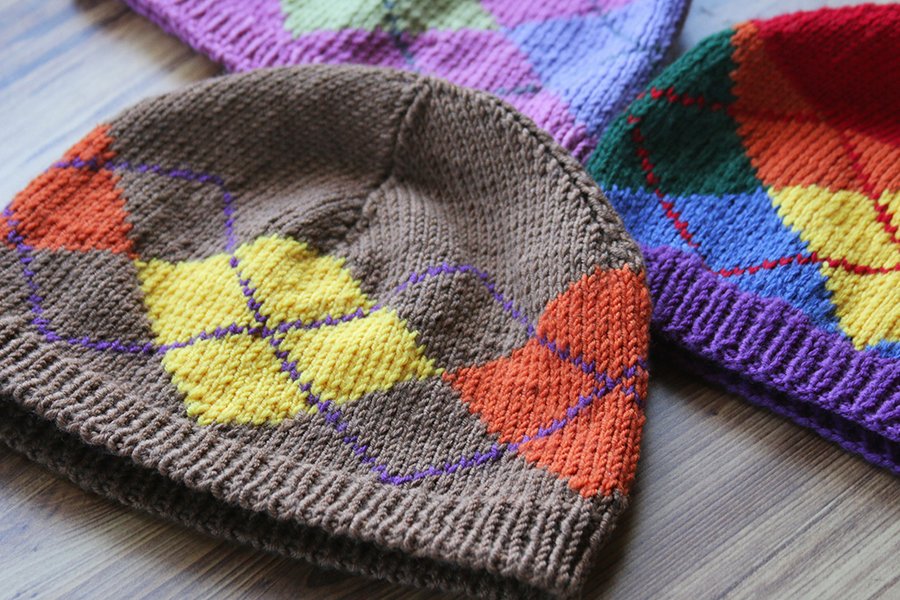I’m teaching the following SEVEN classes. To review the Class descriptions and Register, Click here.
Colorwork the Easy Way!: Mosaic Knitting
Slip-stitch patterns can boast amazing colorwork without the hassle of stranding or working with multiple colors in a row! Stunning results such as intricate mosaic designs, textural colorwork such as houndstooth, and more are in your future. Along with the basic mosaic knitting technique for garter and stockinette, learn to predict when combinations of variegated and solid color yarn work together and when they will not, and how charts are written and read differently for mosaic knitting. Practical tips about navigating the technique and advice regarding the best uses for mosaic knitting are included. Also covered are examples of adding slip stitch to basic garter and progressively adding one, two, and three colors to achieve stunning colorwork results with so little effort.
Vertical Stripes With Knit One Below
Knitting in the stitch below (K1B) can produce a variety of effects, including creating stunning vertical stripes with a thick, soft, and supple fabric while knitting with only one color per row or round. In this class, we will cover and practice the K1B technique to create the column stitch with both flat knitting and knitting in the round. The column stitch becomes vertical stripes when using two colors. Experimentation with variegated colors and textured yarns can add further interest and pizzazz. Suitable cast-ons and bind-offs for this soft, expanded fabric with be taught, as well as tips for attractive edges. Students will practice both versions of the technique, on a swatch for flat knitting and on a hat project for knitting in the round.
crisscrossing the rainbow: Color cables
One can spend a knitting lifetime exploring the various lovely twists and turns that make up regular cable combinations. Now add color to that mix. One-color cable patterns against a different background color, different color cable strands meandering all over and among one another, striped cables, and bi-color rope cables are some of the combinations covered. You will be amazed at how the same cable pattern can produce very different visual experiences by changing which stitch columns receive color. And discover the fun of experimenting with color placement as you learn how to convert a cable chart into a color cable chart using graph paper and/or a charting program.
I’ll put a hex on you! Hexagon Stitch and other Knit One Below Textures
Knitting in the stitch below (K1B) is a stitch that creates a wide variety of textural interest. We will learn and practice the K1B technique on a one-color Twisted Moss pattern practice on a two-color check pattern and other 1, 2, and 3 color textures, and then move on to the more complex hexagon stitch, practicing it flat and in the round on a cowl project. Also, a complex 2-needle cast-on will be taught appropriate for the hexagon stitch and any other expansive knitted fabric, along with appropriate bind-offs demonstrated.
Ooops! Correcting Mistakes and Learning to “Read” Your Knitting
This class is specifically designed for less experienced knitters and is all about knitting literacy, being able to “read your knitting”. You will leave class a more competent, informed knitter. Ever look at your knitting and say, "What happened THERE?", or picked up your knitting project and wondered "Where am I in the pattern?"-how many decreases or increases have I worked?, what row was I on? And why did this end up too big/too small?? Ever panic as a dropped stitch ran down your knitting, not knowing what to do? Take this class! Divided into two sections, "Knowing Where You Are" and "Identifying and Correcting Mistakes", this class teaches how to "read" your knitting--to recognize what you are looking at, where you are, what to do next, whether that be correcting a problem or moving ahead!
introduction to knitting argyle
Love those classic diamond shapes called Argyle, but are mystified about how to accomplish them? In this class, you will learn the classic technique of knitting Argyle flat, along with a seaming method that makes the seam nearly invisible and not bulky. Students will make an Argyle sample swatch, learning how to wrap yarns to prevent holes, how to add in bobbins, and other Argyle tips and tricks. You will also learn the calculations to design your own Argyle diamond patterns for different gauges. You’ll discover the fun of watching these diamonds grow, but beware, Argyle can become addictive!
This is the swatch you will work on in class.
fINISH WITH A bANG! nOT A WHIMPER: SEAMING TECHNIQUES
Finishing means many things in knitting, and a beautifully executed seam is essential for an attractive garment outcome. Learn various methods of seaming and weaving, including joining side seams, sleeves, ribbing, garter st to garter st, weaving two bound-off edges (e.g., shoulders), vertical to horizontal (e.g., sleeve to armhole), flat seam, and making sloped shoulders with short rows and three needle bindoff.


